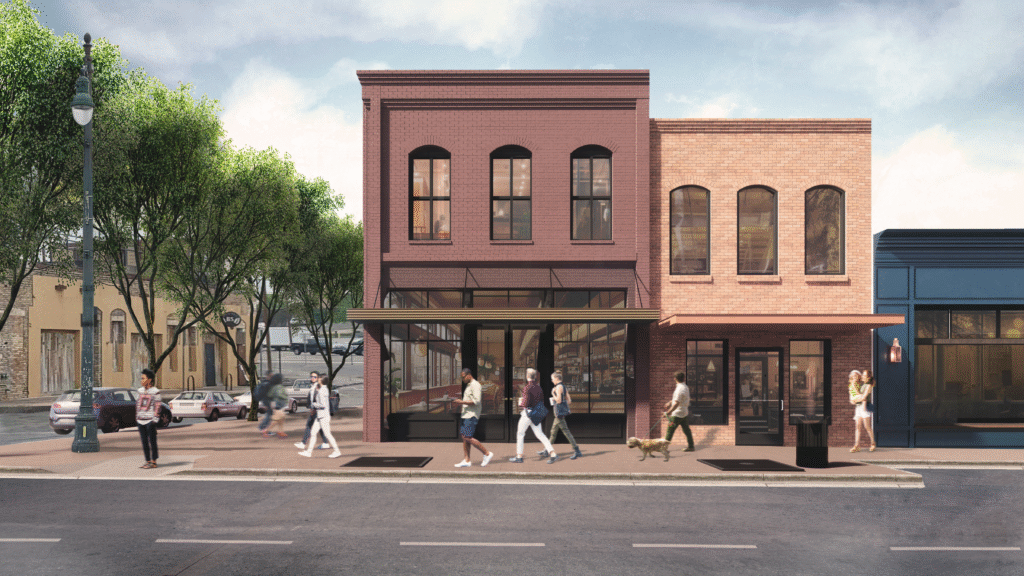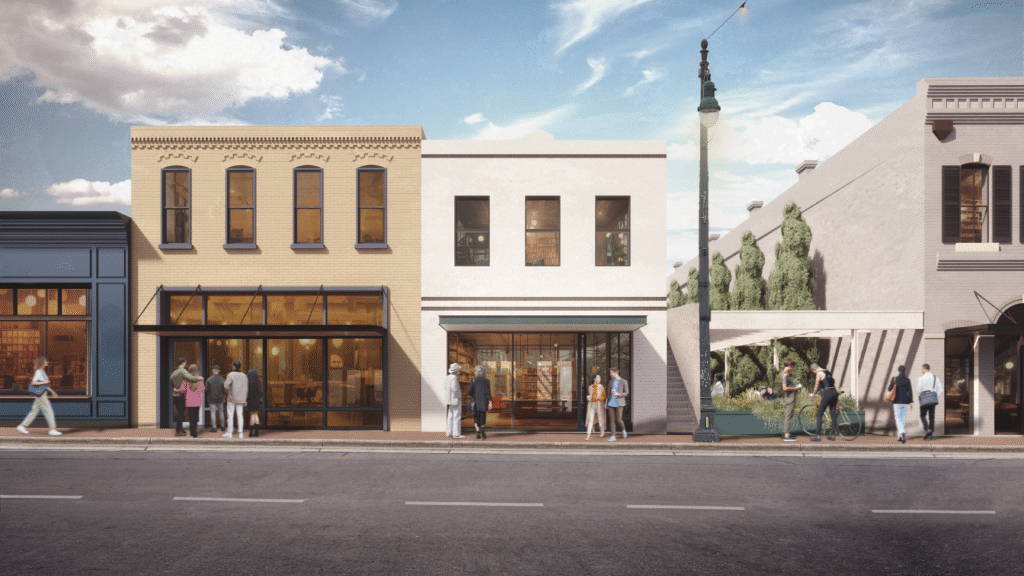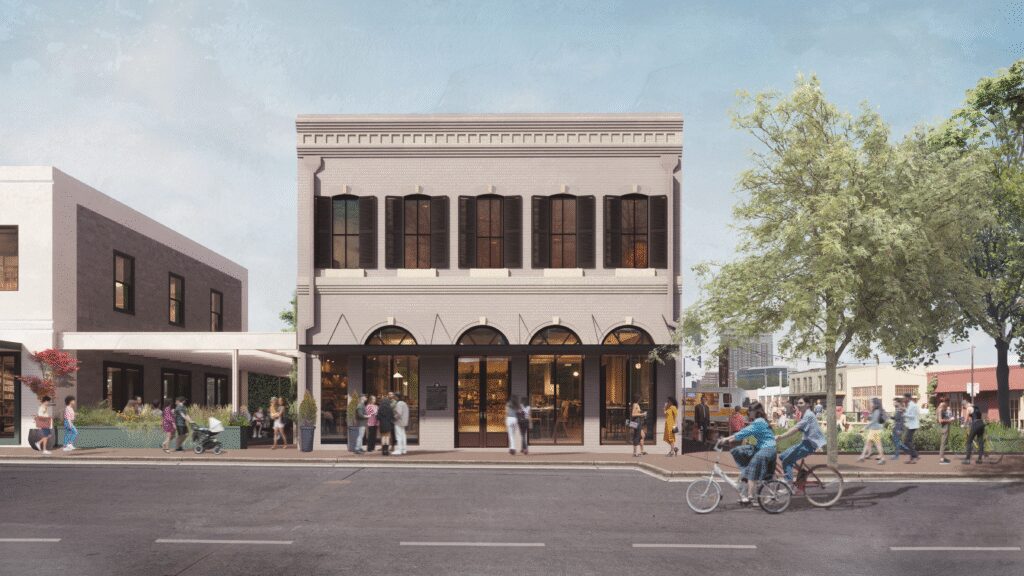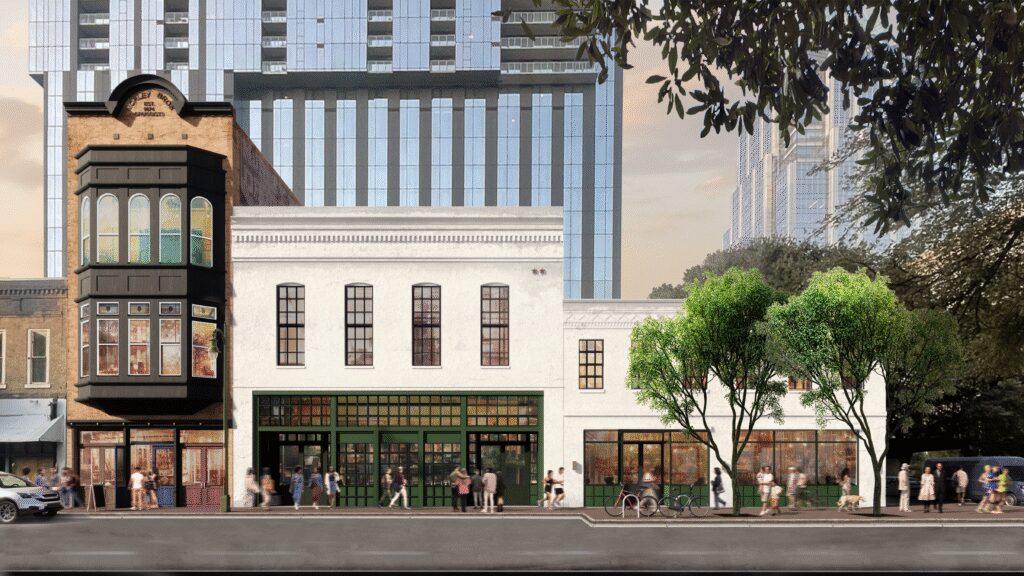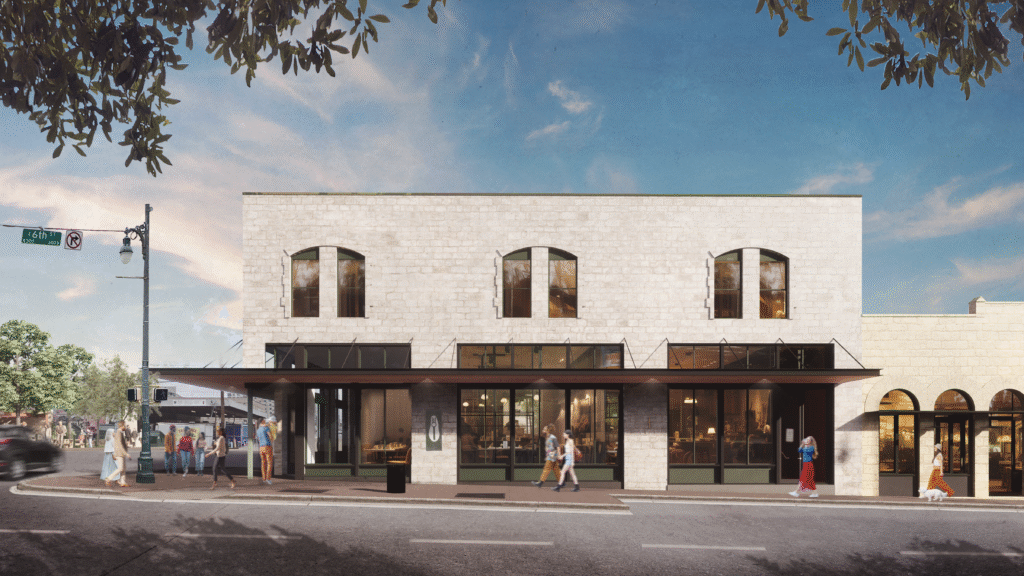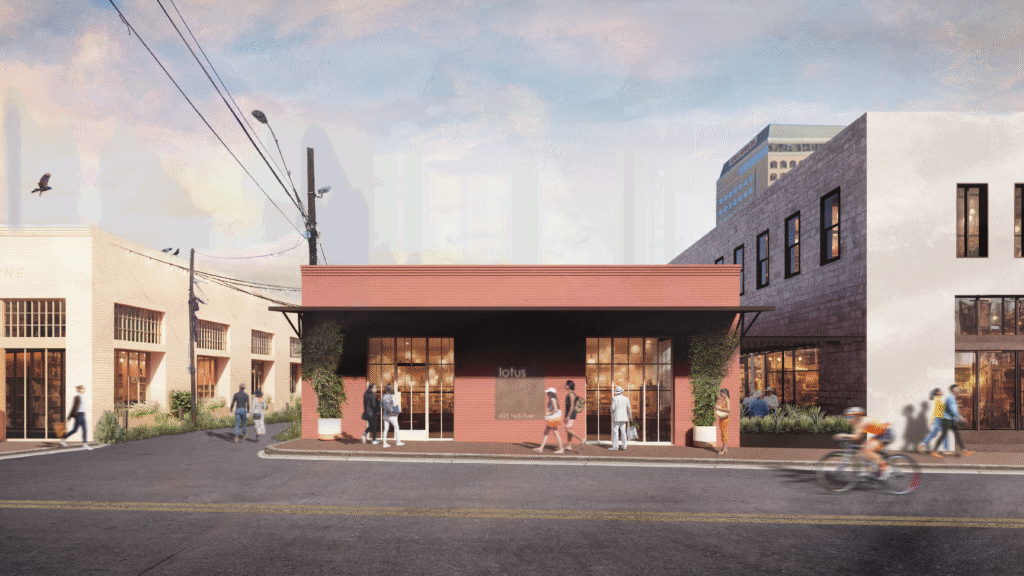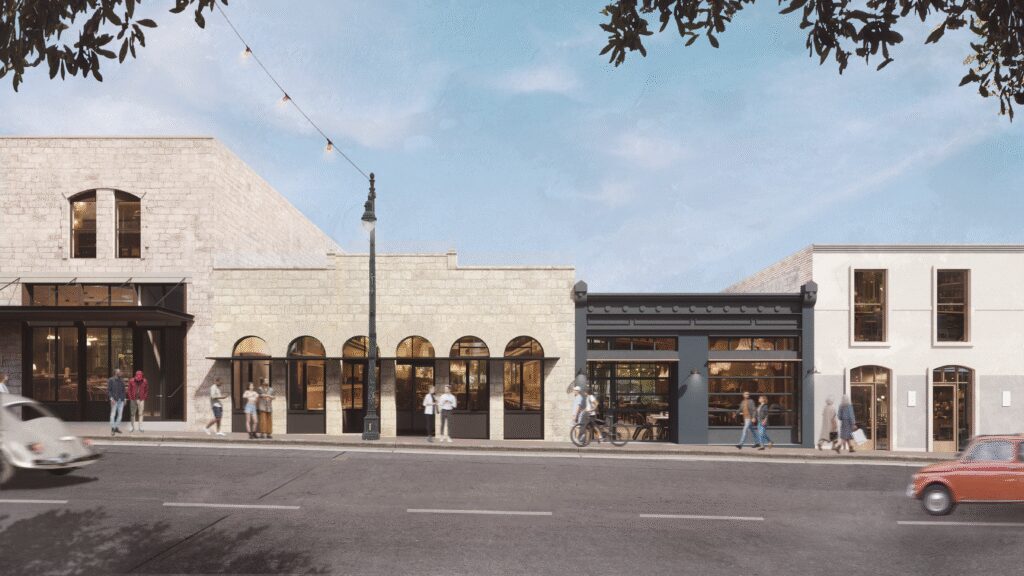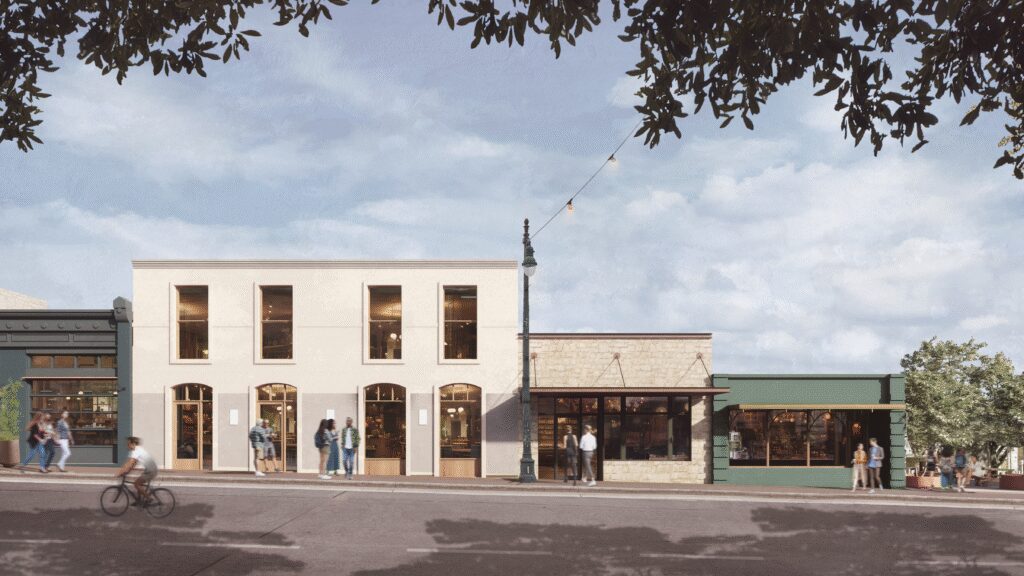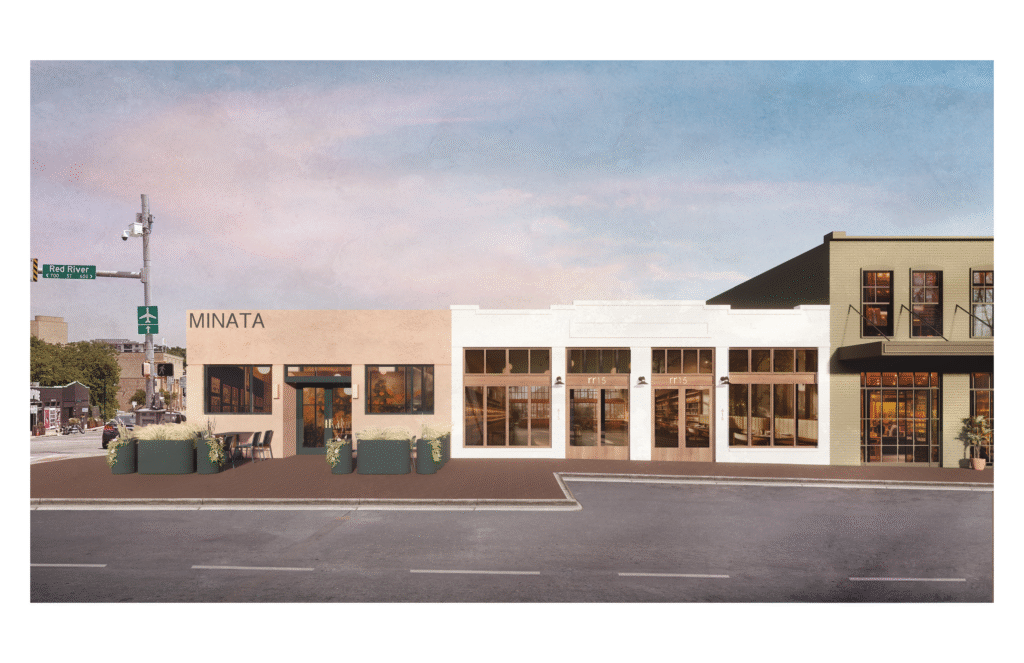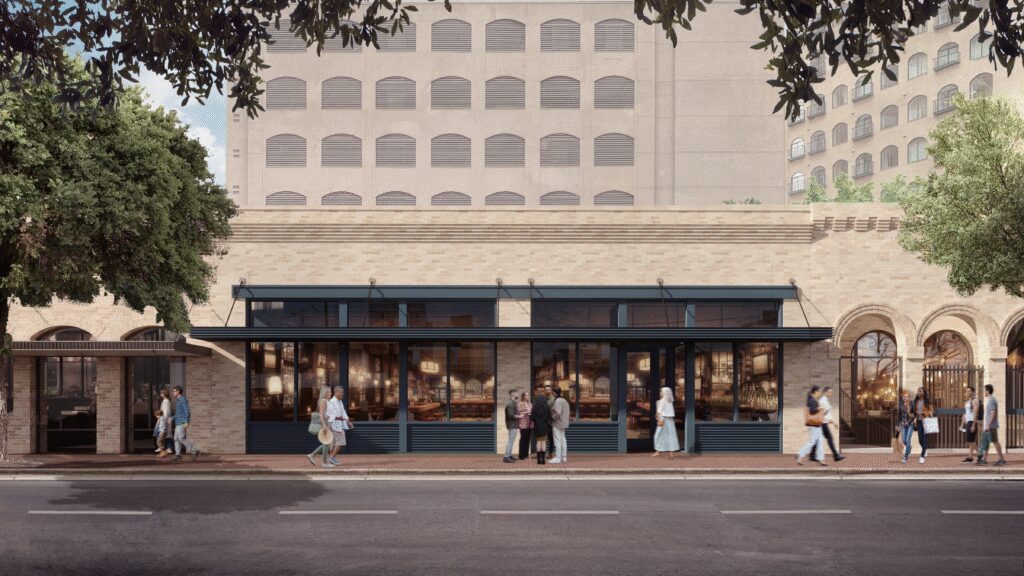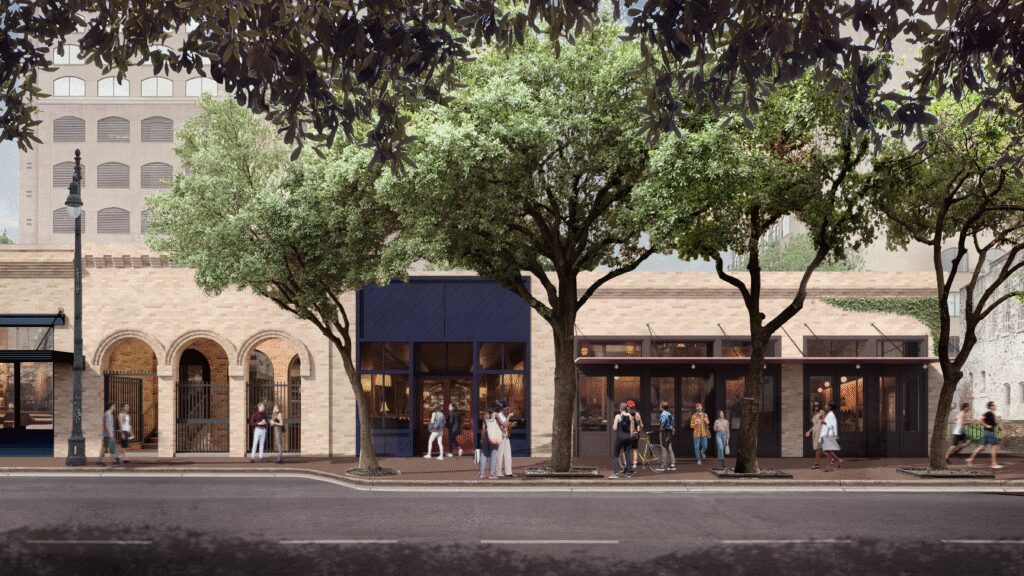Clayton Korte and Stream Realty Bring Historic Character Back to Storied Sixth Street
A mix of new restaurants and retail will soon add new life to the city’s most historic crossroad
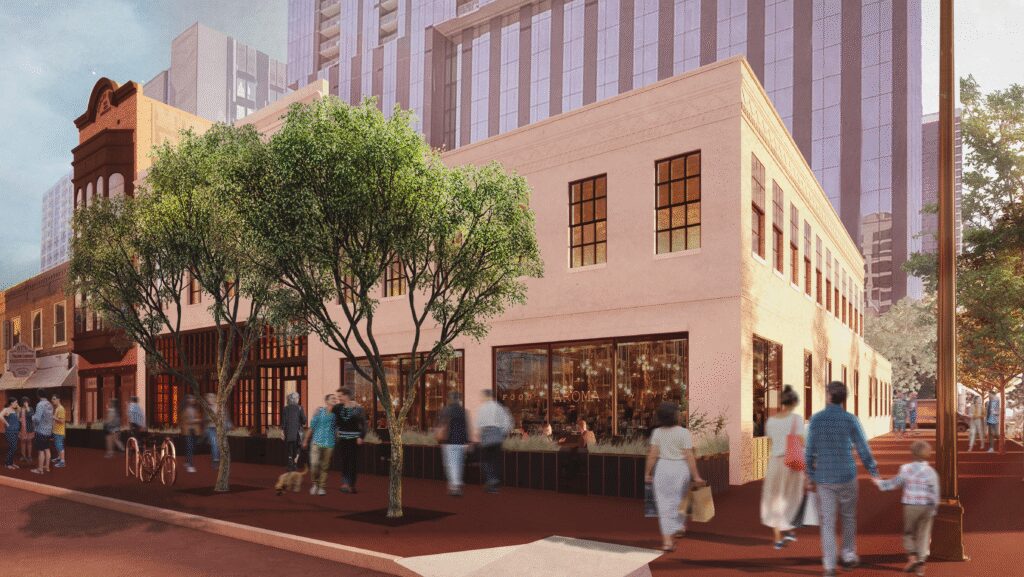
Long before I-35 divided east from west and South Congress became the shopping street of choice, Sixth Street, once called Pecan Street, was a hub of cultural diversity. Grocers, barbers and immigrants built their businesses here, and Jim Crow laws were ignored. In 1872, Edward Carrington, who was born into slavery, opened the city’s first Black-owned grocery in the 500 block. His family ran it for nearly a century, joined by Chinese, Lebanese and Mexican American shopkeepers who made the street a hub of commerce and culture.
Preserving History Through Design
Today, the seven blocks between Congress and I-35 remain the city’s largest collection of Victorian-era structures. For architects Clayton Korte and Stream Realty, the ongoing work to restore 29 of these buildings, which total nearly 200,000 square feet, is about more than design. It’s an effort to preserve the city’s story while creating space for new ones, bringing the daytime crowd back to the district and upgrading safety along the way.
“Sixth Street celebrated individuals and for us that’s such a direct connection to the spirit of Austin,” says architect Sky Currie. “It’s a wonderful thing to keep alive.”
The Scope of Restoration
Designated a National Register historic district in 1975, the area includes a dense mix of one- and two-story masonry buildings that have suffered decades of neglect, patchwork repairs and beer-soaked nights. Clayton Korte’s team, working closely with a historian and the city’s Historic Landmark Commission, studied each structure’s significance before any construction began. “Some were more significant than others,” says principal Paul Clayton. “You have registered Texas landmarks, local landmarks and contributing buildings, each with their own requirements.”
The scope of restoration has been enormous. “Once we got into construction, many (buildings) had been disregarded or abandoned and left to erode over time,” says Currie. “We essentially had to rebuild from the ground up, new structure, roofing, masonry, water and electrical, so they can operate for another generation or two.” Roofs were replaced, facades cleaned and repaired, and original materials such as patterned brick, pressed-metal cornices and cast-iron storefronts uncovered. Upgraded systems prepare the buildings for future tenants and help ensure their longevity for Austinites to come.
“It was never Stream’s goal to paint and put a new window in as quickly as possible,” Currie adds. “This is really from the ground up attention to the restoration work they deserve. Our city is lucky that we have owners who are taking the time and care to bring them back.”
Landmarks With Meaning
Among the most meaningful is the Carrington-Lyons Building, once home to Austin’s first Black-owned grocery. The building has undergone a full interior renovation, with structural reinforcement and updated systems that preserve its stability. Other major restorations include the Morley Drugs Building and several storefronts along the 600 and 700 blocks.
“If you look from Congress down, the street tells a story from more ornate to less so as you get closer to I-35,” Clayton says. “It shows the economic reality of the communities as well as the racial lines of the street.” The 700 block, he adds, “is really special, it’s going to set the tone for the rest.”
Returning Sixth Street to the Community
Beyond architecture, the project reclaims the civic heart of downtown. In its early years, Sixth was akin to New York’s Fifth Avenue, a center of trade and connection. “Our initial feeling was returning an important historic street back to community use,” says Clayton. “It’s about making Sixth a place for families and Austinites again, not just bar-goers and college kids.”
For Clayton Korte, which has long specialized in adaptive reuse projects, the work ties back to the firm’s foundation. “We’re happiest when we can reclaim stories of the past and what makes us who we are,” says Currie.
Tenants and visitors are already seeing changes. Renewed masonry and new windows reveal long-hidden details, while enhanced security and painted blockades from artist Emily Eisenhart have already brought a more welcoming feel. The Downtown Austin Alliance is on board as well with plans to invigorate the streetscape. What has become a rowdy nightlife corridor is on its way to becoming a place where people can gather, shop and experience history in the daylight again.
RELATED: Austin’s Historic Driskill Hotel Begins Renovations and Restoration Ahead of 140th Anniversary

